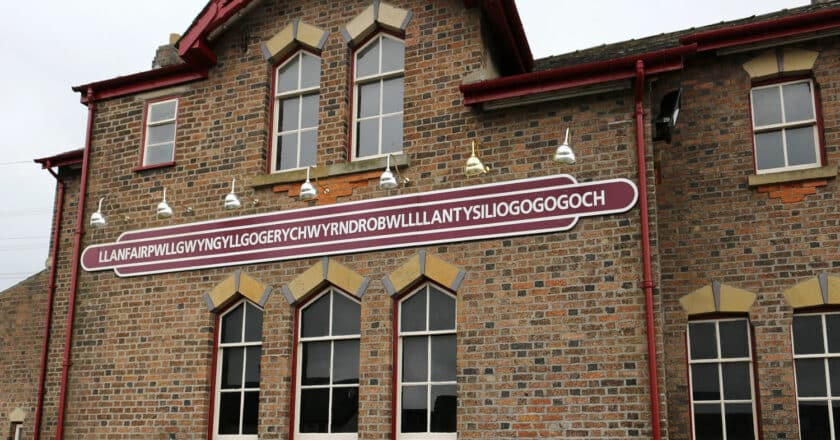“Alcalde Julio Anguita” or “Córdoba-Alcalde Julio Anguita” (I have added the name Córdoba, as the proposal excludes the name of the city). This is the latest proposal to lengthen the name of a station in order to pay homage to a political figure or one that the political class wants to praise. A new absurdity that will only complicate the use of the railway system.
Before I go any further, I must make it clear that in this opinion piece I do not show sympathy for any political orientation. I don’t care if the proposed name is Julio Anguita, Antonio Cruz Conde (as Vox proposed in a complementary way), Macarena Gómez or Joaquín Cortés.
The stations aspire to be the origin or destination of millions or tens of millions of people. Those users may or may not use the railway on a regular basis and they can be locals or foreigners. So, the name of the stations should match this requesites:
- Easily identifiable. In a journey, it doesn’t matter who the honoured person was, what matters is to identify the destination well. For example, Malaga. It has two stations with the name of the city, so it makes sense to differentiate them (Centro-Alameda and María Zambrano). Furthermore, the name should contain references to the location, such as the neighbourhood in which it is located or a main street or point of interest nearby.
- Lasting over time. Precisely so that they are easily identifiable, the name should not be changed unless it is extremely necessary. Can you imagine arriving back to London after a long time and, instead of to London Waterloo, you have to go to London David Bechkam?
- Simple. As much as possible, so that anyone who speaks any language can understand and say the name. This is difficult enough, but don’t make it futilely more complicated!
- Short. Can you imagine a map of a suburban train network with such long names? Or the Passenger Information Systems having to abbreviate? Well, this happens even with short names. A long name only causes visual noise, requires larger signage and is sometimes difficult to fit into maps. Although some people think the opposite, longer is worse.
In cities with more than one station it is a matter of course to differentiate them, as in the case of Segovia, which has Segovia station (conventional network) and Segovia Guiomar (high speed). Or Madrid, which has three and a half main stations (Chamartín, Príncipe Pío and the two Atocha stations).
And even in those cases the names have to meet the criteria I mentioned before. Not because I like them or because I have invented them, but to make life easier for people. At this rate we’re going to end up with stations with names longer than Lllanfairpwllgwyngyllgogerychwyrndrobwllllllllantysiliogogogogogoch… We are not far short of that.
In the Spanish National Rail Network we have several cases of stations whose names have been changed in recent decades in an unfortunate way.
- Bilbao Abando was renamed Abando Indalecio Prieto in 2006, officially losing even the name of the city. Renfe, for obvious reasons, does keep Bilbao in the name.
- Madrid Chamartín was renamed Madrid Chamartín Clara Campoamor in December 2020. It must be said that there is only one Chamartín station and that the additional 16 characters add nothing in terms of usability. On the contrary, it is an addition that makes it difficult to use in signage, maps and other information. The common mortals still call it Madrid-Chamartín, Chamartín plain and simple or even Chamar to make it shorter.
- Madrid Puerta de Atocha by Madrid Puerta de Atocha – Almudena Grandes, in November 2022. If for some people it is already difficult to understand why there are two Atochas (Atocha Cercanías and Puerta de Atocha), adding 17 characters to an already long name only adds confusion. Incidentally, it is only 16 characters shorter than Llanfair).
- Fanjul for Maestra Justa Freire-Polideportivo Aluche, in March 2023. It’s a 6 times longer name. I am not debating about the Law of Historical Memory, but about the absurdity of giving such a ridiculously long name (42 characters) to a station. Aluche-Polideportivo (to distinguish it from Aluche) or Justa Freire would have been alternatives that make the name easier to use. Most people still call the station Fanjul, the opposite of what was intended.
STOP IT NOW
Illustrious people have every right to have their tribute in the places where they were born. But existing stations are not the place to do it, and even less so when the names get so long and complicated!
Newly built stations are a different case, but even so the name should still respect the criteria and not call, for example, Paco de Lucía to a station destined to be Costa Brava.
I am not talking about reversing the changes made in the last 20 years, which could perhaps be considered. But, please, political class of Spain, STOP making life difficult for railway users. And look for other ways to remember those you want to keep in memory.
You can make monuments, change the names of streets, squares, cultural centres, etc. In short, the old-fashioned way.
And this applies to other means of transport and metro networks, which is not a problem exclusive to the Spanish National Rail Network.



